Ventilation in a wooden house. Features of ventilation in the bathroom
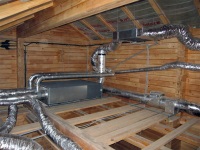
It is believed that in wooden houses, air circulation occurs naturally, so such houses do not need to build complex ventilation systems. Indeed, many of us have noticed that in houses built of natural wood, breathing is easier than in concrete boxes and the air in them as if more fresh and clean. This is largely due to the fact that the natural material was used for the construction, with a more porous structure, in addition to initially having certain bactericidal properties. But the main reason is not the ability of wood to exchange air, but that it is able to give and take moisture. Therefore, the issue of organizing ventilation in a wooden house is very important.

Features
In a wooden house naturally regulates the level of humidity, but not the circulation of air. Moreover, if the house provides rooms with a high level of humidity, even the wooden house's ability to get rid of excess moisture on its own will not keep it from rotting. If we are talking about the construction of a private house for permanent residence, you can not do without such premises. At least it is one combined bathroom, but many owners prefer to equip their houses with several bathrooms and toilets, as well as a sauna, swimming pool, laundry room, etc.
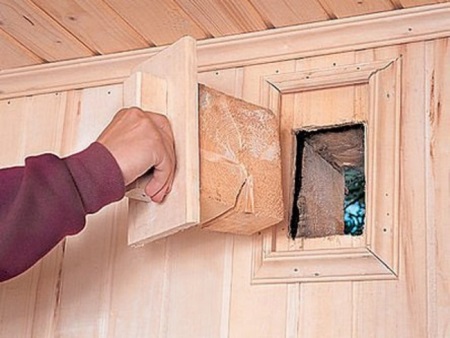
So, it is very important that the wooden house has a competently designed and built ventilation system. Otherwise, because of the accumulation of moisture, problems can begin, the least of which is the formation of mold and mildew on the walls, and the most serious is the gradual rotting of supporting structures, which can collapse at any time.
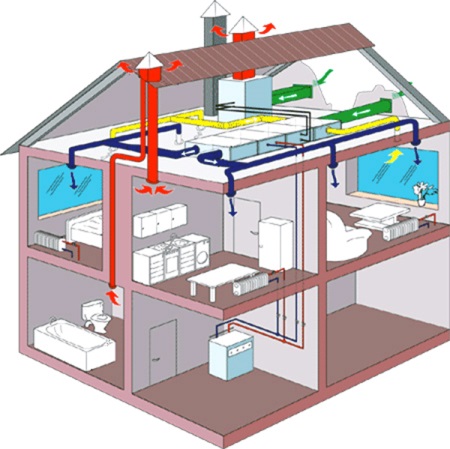
Ventilation in the bathroom
It is best to start designing ventilation systems at the same time as creating the project of the building itself. In this case, you will be able to provide a place where the ventilation ducts will pass, as well as other important points. You should start installing ventilation systems as early as possible. This will allow you to make timely adjustments without interfering with the construction process. However, if you have a finished house with all the systems already installed, then you can only rely on the integrity of the builders, and in the event of problems, try to correct their mistakes.
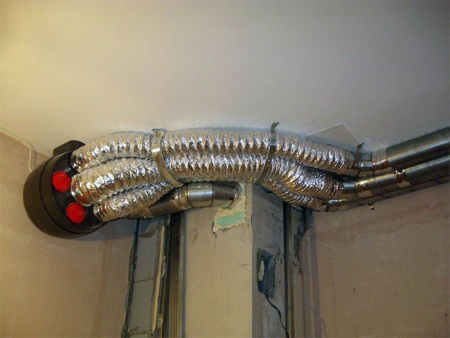
In any private house, as a rule, there is so-called passive ventilation. It is a system of ventilation ducts with channels through which the air moves. Sometimes it is quite enough, but over time it fails, because it is clogged with particles of dust and debris. Don't be alarmed: it must take several decades for this to happen.
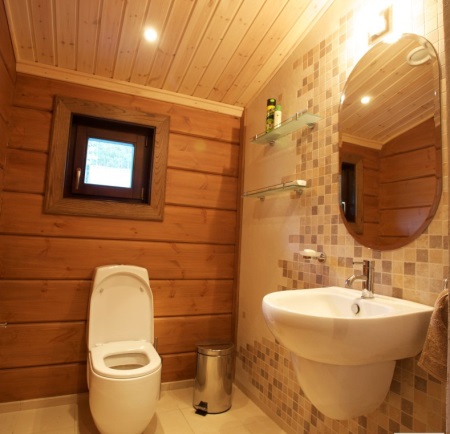
The very first sign that the ventilation system in your home is not working well enough is the formation of condensation. Look closely at smooth surfaces such as mirrors or polished furniture to see if small droplets of water are settling on them. The next step is the appearance of mold and a variety of moisture-loving insects.
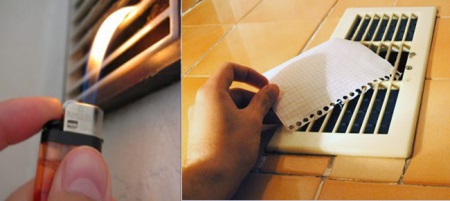
There are two good ways to check if the ventilation system is working:
- Hold a burning match or lighter to the vent. If the vent is functioning properly, the fire will deflect to the side at a sharp angle. If the fire will only flicker faintly, there is a problem.
- Take a small piece of thin paper, such as a tissue, and touch the vent with it. If there is nothing wrong with the ventilation system, the paper will be "magnetized" to the grille.
If your ventilation system does not pass the test, then there is a need for additional ventilation equipment. First of all, this should apply to the bathroom.

Rules and regulations
In addition to passive ventilation, also called natural ventilation or exhaust ventilation, there is also mechanical or forced ventilation. In the case of natural ventilation, air circulation is due to the temperature difference between the outside and the inside of the building, and mechanical ventilation involves the installation of special equipment.
For a small single-storey house with one bathroom will be quite sufficient passive ventilation, but the owners of larger construction projects will have to worry about arrangement of mechanical ventilation system.
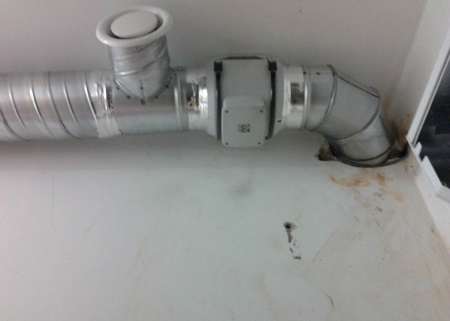
Here are some regulatory requirements for ventilation in bathrooms:
- The maximum air velocity in the room is 0.3 meters per second;
- relative humidity must not exceed 65%;
- air temperature in summer should be about +25 degrees, in winter - about +18 degrees;
- for good air exchange, the supply-exhaust air must be: in a separate bathroom 25 cubic meters per hour, and in a combined bathroom - 50 cubic meters per hour.
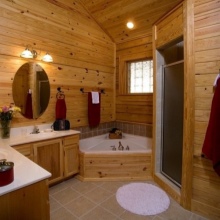
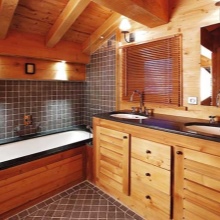
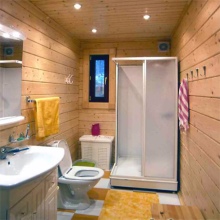
For each sanitary appliance, the standards set a certain multiplicity of air exchange:
- shower enclosure/jacuzzi/bathtub - 75 cubic meters per hour;
- sink/bidet - 25 cubic meters per hour;
- WC - 50 cubic meters per hour.
We should take into account the fact that we rarely use all the sanitary appliances at the same time, so the multiplicity of air exchange in the bathroom should not be equal to the sum of inflow-exhaust of all equipment. Therefore, the capacity of the ventilation system in the room is usually not more than 110 cubic meters per hour.
How to choose a fan
There are several important parameters that you should definitely pay attention to when choosing a fan for the bathroom in a wooden house.
The main ones are:
- The level of noise that the fan produces. Ideally, it should operate almost silently. This can be achieved if the noise level of the device does not exceed 40 decibels.
- The way the fan is assembled. Usually, these are sleeves or ball bearings. Fans assembled the second way have a longer life, and they work quieter.
- The capacity of the device. It is measured in cubic meters per hour. In order to calculate the required fan performance, you need to measure the volume of the room and multiply it by the required rate of air exchange. For the bathroom, the optimal rate of air exchange is 8/10, and for the bathroom - 7/8.
- The way to start the fan. The most popular way is to turn on the fan simultaneously with the light. This system can be supplemented with a built-in timer, which will turn off the fan after a given period of time after lights out. The second method involves installing a special humidity sensor that will control the operation of the fan. In this case, the fan starts only when the humidity level in the bathroom exceeds the set standard.
- Fan model. In stores you can find models designed for rooms with a high level of humidity. It is better for you to opt for them.
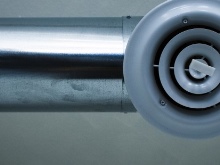

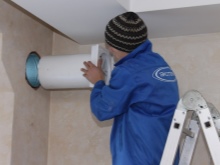
Installation
So, we found out that forced ventilation is the best solution to ensure normal air circulation in the bathroom of a private wooden house.
Before proceeding directly to the installation of the ventilation system, make sure that the basic requirements of fire safety have been met:
- First, make sure that the project provides distances between the walls and ventilation ducts.
- Second, pay attention to the fan model. There should be a marking on the package that it can be used in rooms with high levels of humidity.
When installing the vent yourself, the following important points must be taken into account:
- Do not install ventilation boxes and ducts directly on wooden joists. Purchase special fasteners for this purpose.
- When purchasing the necessary building materials and equipment, make sure they are all made of non-flammable materials.
- Even at the design stage of the ventilation system, provide an expansion hole in the wall through which the ventilation duct passes. Otherwise it will deform if the building shrinks.
- Fire safety measures require that ventilation in the bathroom be equipped with fire dampers, which will be able to cut off the flow of oxygen in case of fire.
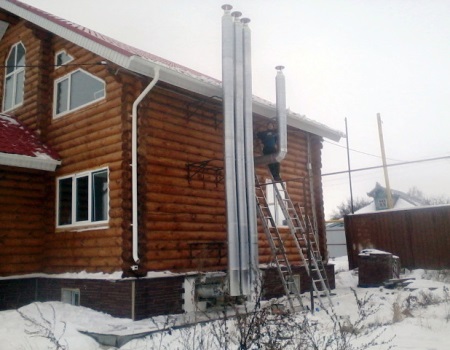





Yes, the flame from the lighter when you check the vent barely flickers. We need to address the problem.